Abstract
1-Aminocyclopropane-1-carboxylic acid (ACC) is aerobically oxidized in plant tissues to form ethylene by ethylene-forming enzyme (EFE). The effect of substrate (ACC and oxygen) concentrations on ethylene production rate by plant tissues was investigated. The Km value for O2 in ethylene production varied greatly depending on the internal ACC content. When ACC levels in the tissue were low (below its Km value), the concentration of O2 giving half-maximal ethylene production rate ([S]0.5) ranged between 5 and 7%, and was similar among different tissues. As the concentration of ACC was increased (greater than its Km value), [S]0.5 for O2 decreased markedly. In contrast, the Km value for ACC was not much dependent on O2 concentration, but varied greatly among different plant tissues, ranging from 8 micromolar in apple (Malus sylvestris Mill.) tissue to 120 micromolar in etiolated wheat (Triticum aestivum) leaf. Such a great variation was thought to be due to the different compartmentation of ACC within the cells in different tissues. These kinetic data are consistent with the view that EFE follows an ordered binding mechanism in which EFE binds first to O2 and then to ACC.
Full text
PDF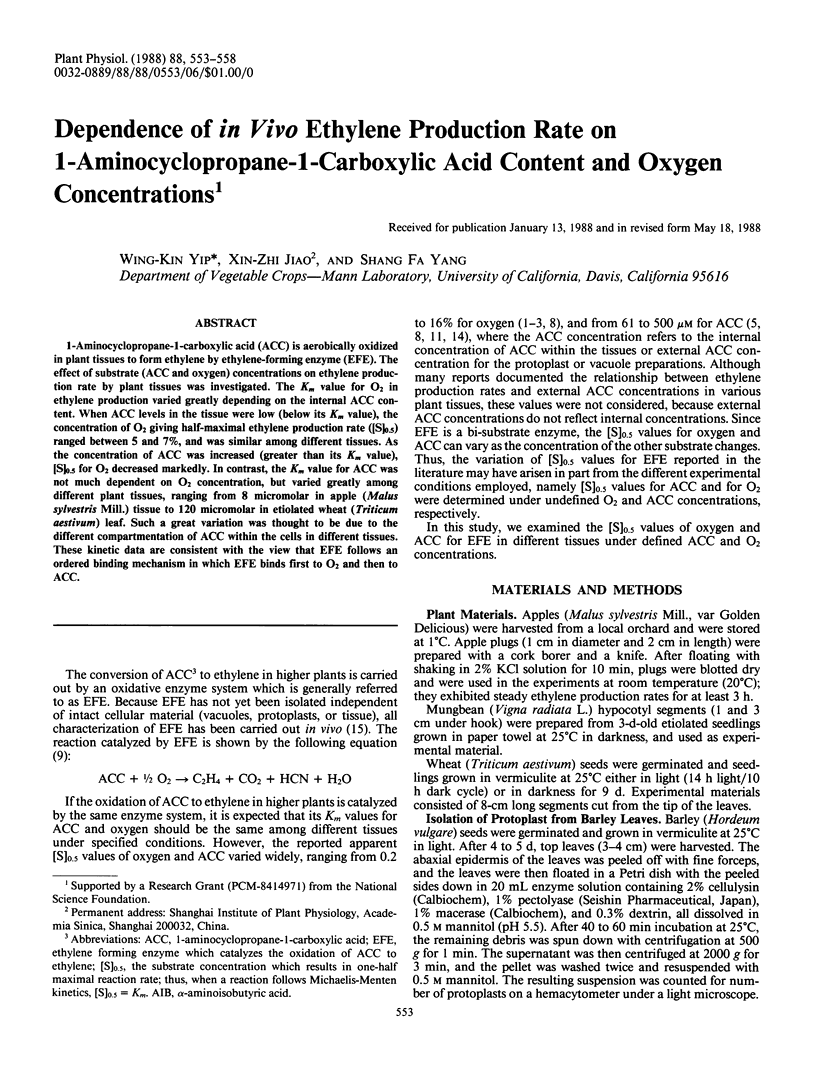
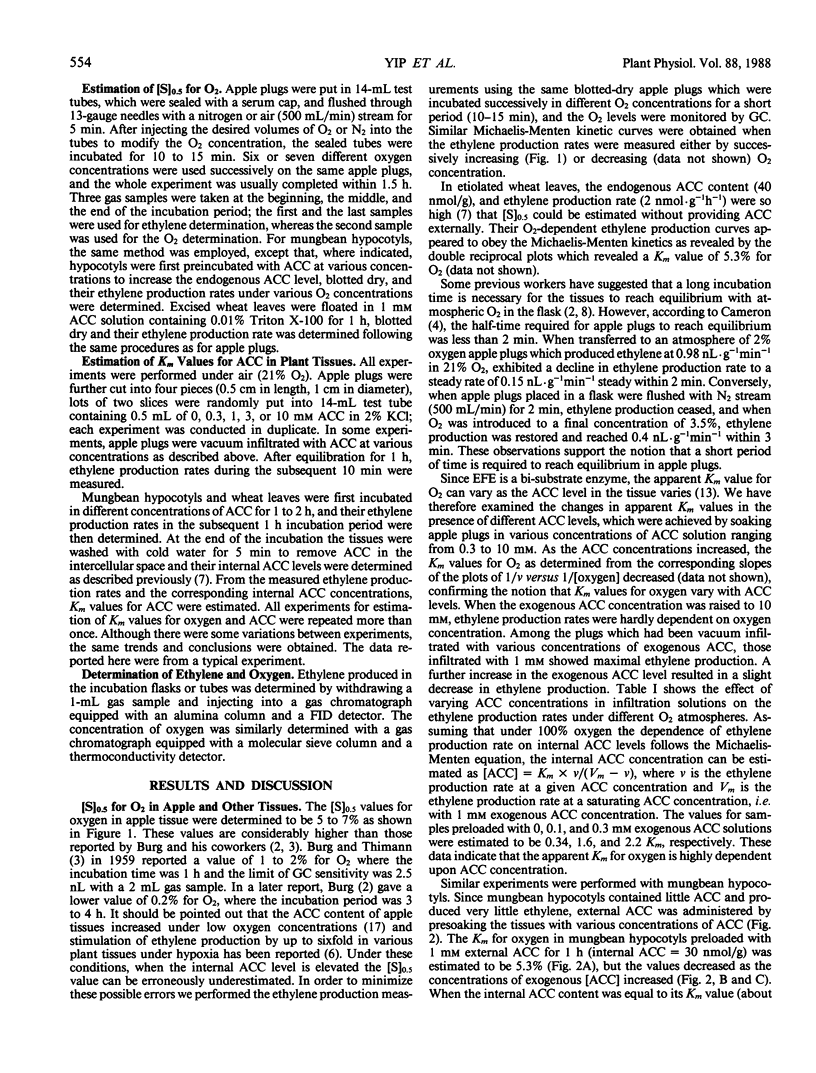
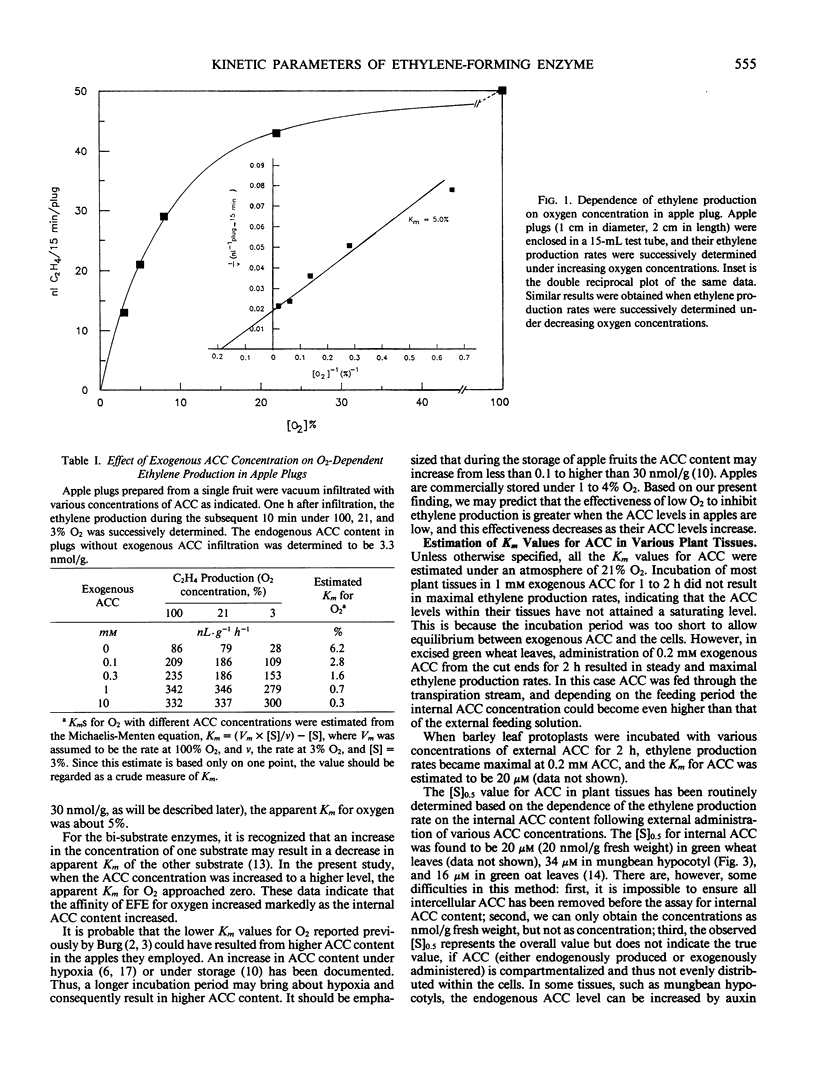
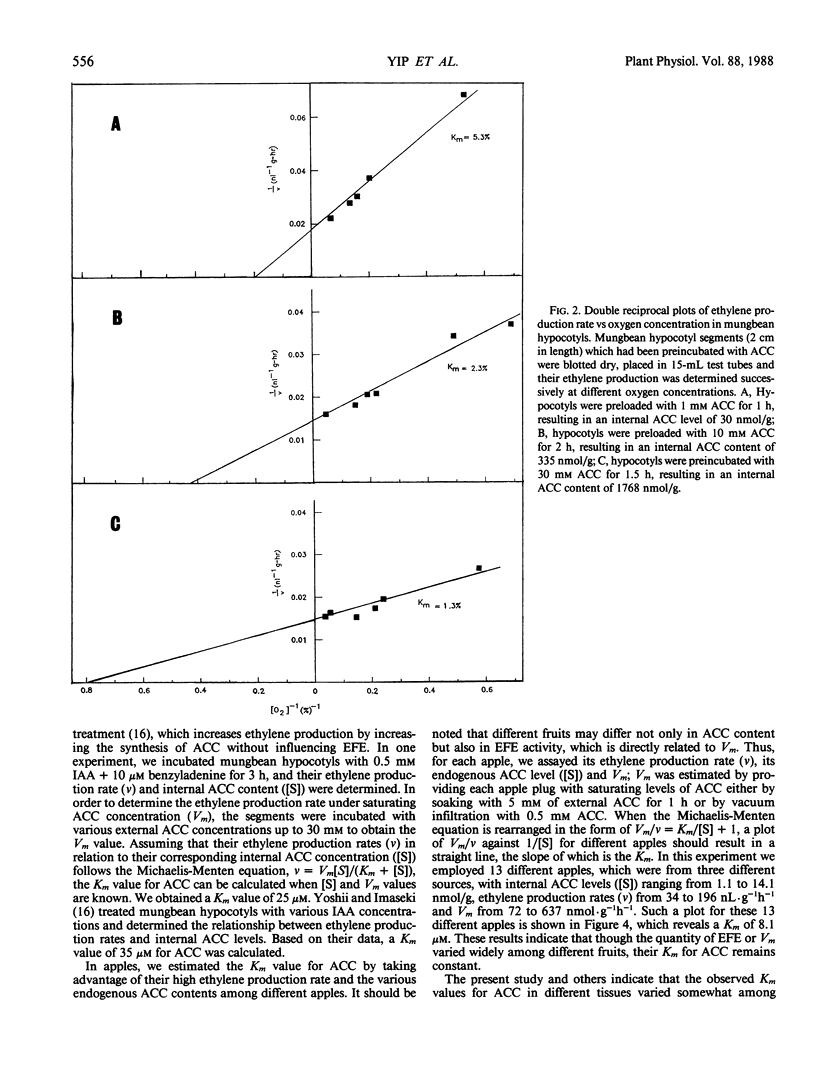
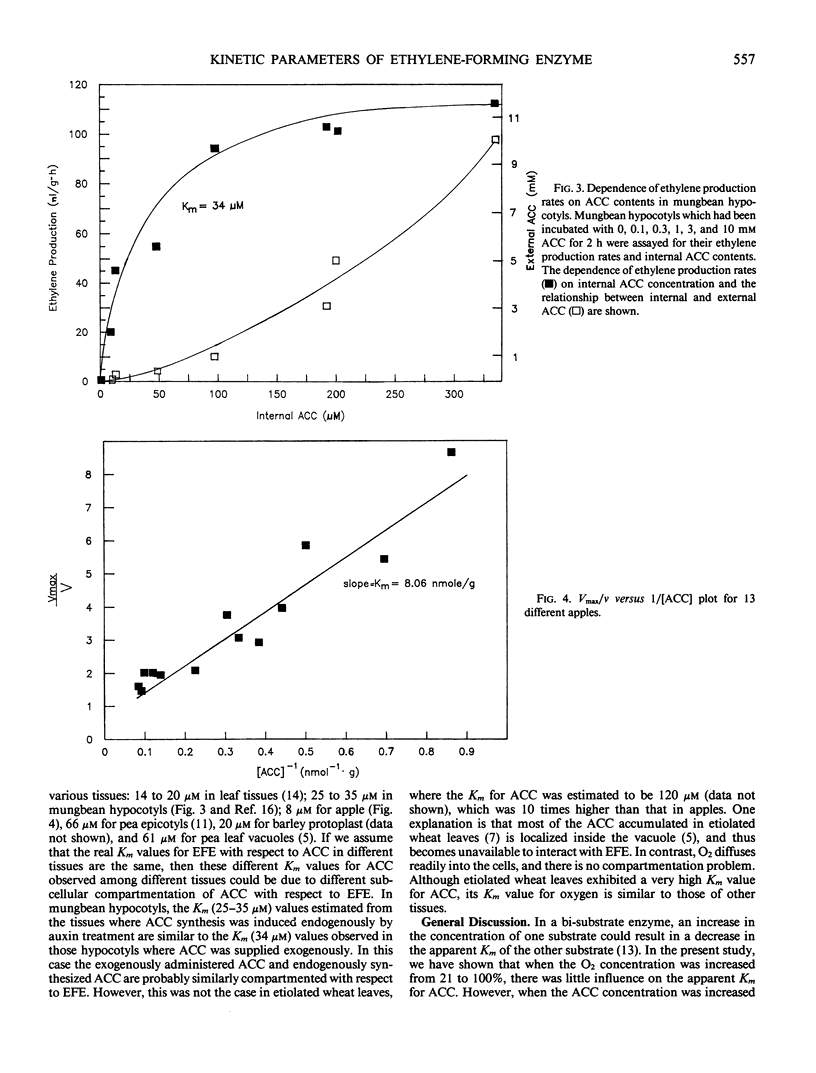
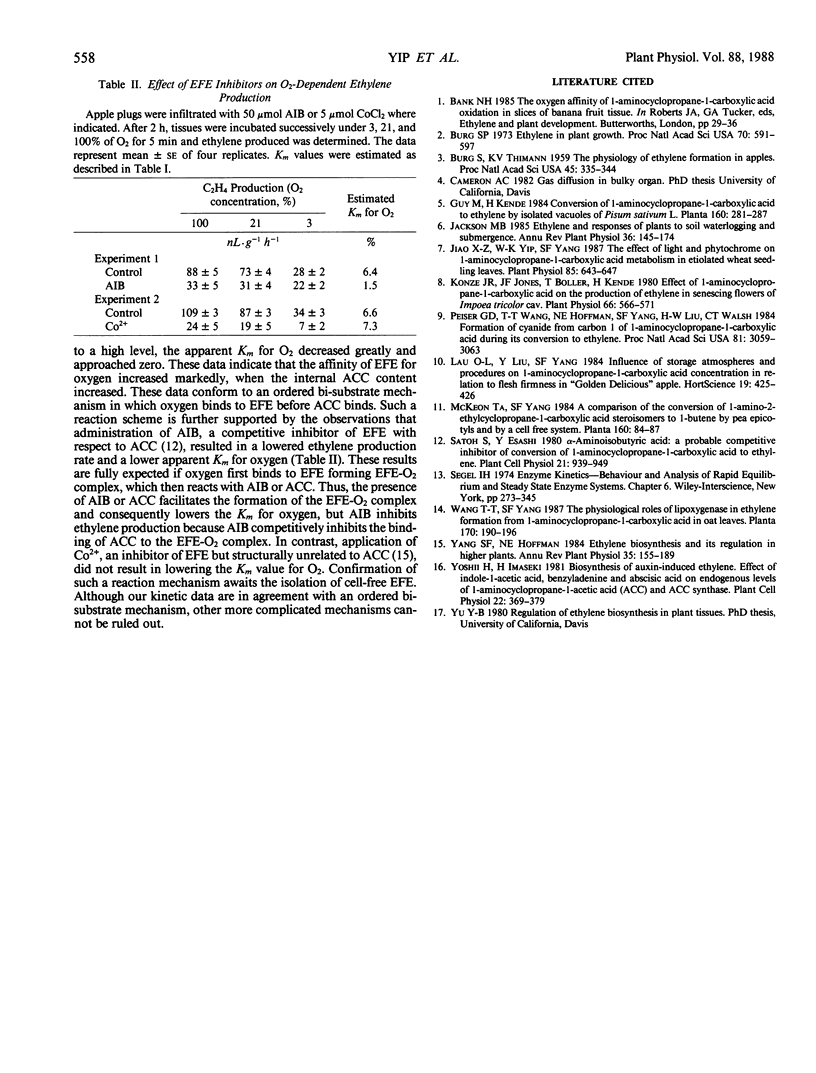
Selected References
These references are in PubMed. This may not be the complete list of references from this article.
- Burg S. P. Ethylene in plant growth. Proc Natl Acad Sci U S A. 1973 Feb;70(2):591–597. doi: 10.1073/pnas.70.2.591. [DOI] [PMC free article] [PubMed] [Google Scholar]
- Burg S. P., Thimann K. V. THE PHYSIOLOGY OF ETHYLENE FORMATION IN APPLES. Proc Natl Acad Sci U S A. 1959 Mar;45(3):335–344. doi: 10.1073/pnas.45.3.335. [DOI] [PMC free article] [PubMed] [Google Scholar]
- Jiao X. Z., Yip W. K., Yang S. F. The effect of light and phytochrome on 1-aminocyclopropane-1-carboxylic Acid metabolism in etiolated wheat seedling leaves. Plant Physiol. 1987 Nov;85(3):643–647. doi: 10.1104/pp.85.3.643. [DOI] [PMC free article] [PubMed] [Google Scholar]
- Konze J. R., Jones J. F., Boller T., Kende H. Effect of 1-Aminocyclopropane-1-Carboxylic Acid on the Production of Ethylene in Senescing Flowers of Ipomoea tricolor Cav. Plant Physiol. 1980 Oct;66(4):566–571. doi: 10.1104/pp.66.4.566. [DOI] [PMC free article] [PubMed] [Google Scholar]
- Peiser G. D., Wang T. T., Hoffman N. E., Yang S. F., Liu H. W., Walsh C. T. Formation of cyanide from carbon 1 of 1-aminocyclopropane-1-carboxylic acid during its conversion to ethylene. Proc Natl Acad Sci U S A. 1984 May;81(10):3059–3063. doi: 10.1073/pnas.81.10.3059. [DOI] [PMC free article] [PubMed] [Google Scholar]


